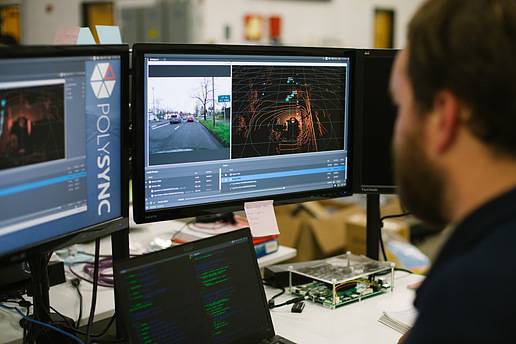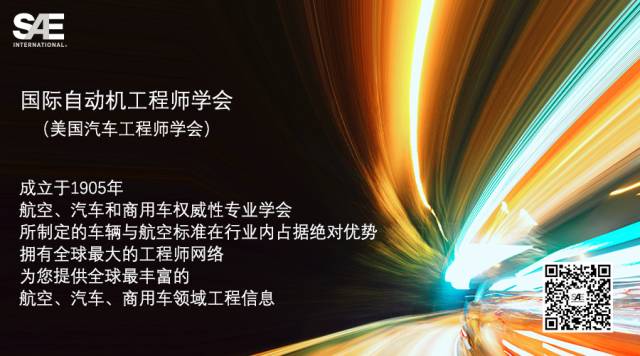 PolySync等初创公司希望凭借自动驾驶等颠覆性技术,为公司“敲开”与汽车厂商展开合作的大门。
PolySync等初创公司希望凭借自动驾驶等颠覆性技术,为公司“敲开”与汽车厂商展开合作的大门。
长期以来,汽车行业漫长的研发及生产周期,一直是厂商与初创公司开展合作的阻碍。如今,随着数字技术的发展,这一情况已经有所改观,但很多年轻公司仍然很难与汽车厂商展开合作。
消费技术的客户需求是促使双方开展合作的主要动机之一。长期以来,汽车公司在寻求合作伙伴时,通常都会回避初创公司,原因主要是担心这些年轻公司无法长期坚持下去,直至汽车设计真正开始产生收益。
从另一方面来讲,初创公司常常也不愿和汽车行业合作,因为汽车厂商通常很难跟上消费电子技术的变化速度。不过,考虑到客户对消费技术的迫切需求,初创公司和汽车厂商可能不得不在彼此差异巨大的研发周期上做出协调,真正开展合作。
“如果汽车厂商希望走在创新的最前沿,那就必须承担相应风险,”Parknav公司商业发展副总裁Gerhard Boiciuc表示,“他们必须与创新公司合作,无论这些公司规模大小。”
总部位于芝加哥的Parknav公司可为用户提供应用程序,帮助司机寻找街边车位。Parknav公司选择直接与一级和二级厂商合作,这种模式也在汽车行业日益流行起来。交通信息提供商Inrix拥有超过10年的历史和多家汽车客户。目前,Parknav正在与Inrix公司进行紧密合作。
然而,与绝大多数年轻公司一样,Parknav也致力于消除所有中间环节。一些公司选择通过聘请顾问,协调多家不同需求公司之间的合作。
“我们的客户范围很广,既有历史超过100年的老牌公司,也有一些年轻的初创公司。”Renz Ventures公司创始人Joe Renz表示,“许多厂商不愿直接与初创公司打交道,因为这些公司可能没几年就消失了,因此他们通常选择将这些公司交给一级供应商处理。这两类公司在企业文化上也有差异——在底特律,如果有人敢在生产前10分钟内修改软件,然后事情又进展的不顺利,那他肯定要被炒了。”
最近几年中,随着汽车厂商开始更多采用消费技术,初创公司也取得了一些成绩。一些汽车厂商还与初创公司达成协议,为他们提供资金支持,协助这些公司“熬过”汽车行业特有的超长开发周期。
然而,在这种模式下,一家初创公司通常仅能“牵手”一家汽车厂商,而并不是所有初创公司都愿意只与一家公司合作,因此他们正在努力尝试各种途径,以“熬过”汽车行业通常长达数年的漫长研发周期。
PolySync是一家专注自动驾驶汽车业务的中间供应商,“初创公司肯定要经受磨炼。”公司CEO Josh Hartung表示,“我们本可以直接拿汽车厂商的资助,然后成为他们的战略合作伙伴,但最后还是坚持选择了风投。我们希望,所有公司都可以用到我们的产品,而不是某一家公司。”
通常来说,新公司的研发技术都非常“吸睛”,可以协助供应商“脱颖而出”。随着全球性竞争的不断加剧,初创公司与老牌厂商之间的合作需求也日益迫切。
“中国是一个很大威胁,很多老牌厂商可能输的很惨。”Renz表示,“去年的汽车领域内,汽车厂商的日子都过得还不错,但初创公司却很艰难。通常情况下,公司在重压之下的变化可能会更加频繁。”
初创公司称,一些厂商也很愿意帮助年轻公司,比如与后者签订“技术合作”合同,而非单纯的“技术供应”合同。对初创公司而言,虽然这种方式可能真的可以带来利润,但并非长久之计。
“事实上,创业公司往往最后都在做客服方面的工作,”Hartung说,“这种模式短期内没问题,但很难扩大规模。”
Lengthy development and production cycles in the automotive industry have long prevented automakers and startups from working together. That’s changed a bit as digital technologies gained in importance, but many young companies still find it difficult to work with OEMs.
Customer demand for consumer technologies has prompted the two sides to work to close the gaps that have kept them apart. Automotive companies long eschewed startups because they couldn’t be sure that young companies could wait years before automotive designs began producing revenues.
Entrepreneurs often ignored the industry because automakers struggled to adopt technology that changed rapidly.The push to merge short consumer cycles with longer automotive timetables is breaking down barriers.
“If OEMs want to be at the forefront of innovation, there will be risk,” said Gerhard Boiciuc, Vice President of Business Development at Parknav. “They’ll have to work with innovative companies, regardless of their size.”
Parknav provides an app that helps drivers find on-street parking. It has leveraged a strategy that’s becoming popular, partnering with Tier 1s and 2s. The Chicago-based company works closely with Inrix, a decade-old company that provides traffic information to a number of OEMs.
However, Parknav and many other young companies are keen to eliminate any middlemen. Some of them employ consultants to help companies with disparate needs work together.
“We serve as a layer between 100-year-old companies and startups,” said Joe Renz of Renz Ventures. “Many OEMs do not want to deal with startups that may not be around in a few years, so they often pass them off to the Tier 1s. There’s a cultural gap—if a guy in Detroit accepts software 10 minutes before production and it doesn’t work, he gets fired.”
In recent years, startups earned a few successes as automakers adopted more consumer technologies. Some OEMs have forged arrangements with startups, providing funding to help them survive through long development cycles.
However, that typically ties a startup to one automaker. Not all entrepreneurs want to be limited to a single partner, so they’re struggling to create strategies to survive during multi-year automotive design cycles.
“Startups have to go through hoops,” said Josh Hartung, CEO at PolySync, a middleware supplier focused on autonomous vehicles. “We could have taken money and become a strategic partner to an OEM, but we’ve stuck with venture capital. We want to provide products for all companies, not just one company.”
New companies often create technologies that can help draw consumer attention and differentiate suppliers. Global competition is seen as one of many factors that will force young and established companies work together.
“There’s a big threat coming out of China; the established guys have a lot to lose,” Renz said. “Last year was a good year for OEMs, but a bad year for automotive startups. Generally, changes come more often when companies are stressed.”
Entrepreneurs note that some OEMs try to help young companies by treating them more as contract designers than as companies offering new technology. While that can be profitable, it’s not always the pathway to long-term profitability.
“Startups often end up having to do a lot of custom service work,” Hartung said. “That’s good in the short term, but you can’t scale it.”
Author: Terry Costlow
Source: SAE Automotive Engineering Magazine
等级
打分
- 2分
- 4分
- 6分
- 8分
- 10分
平均分
